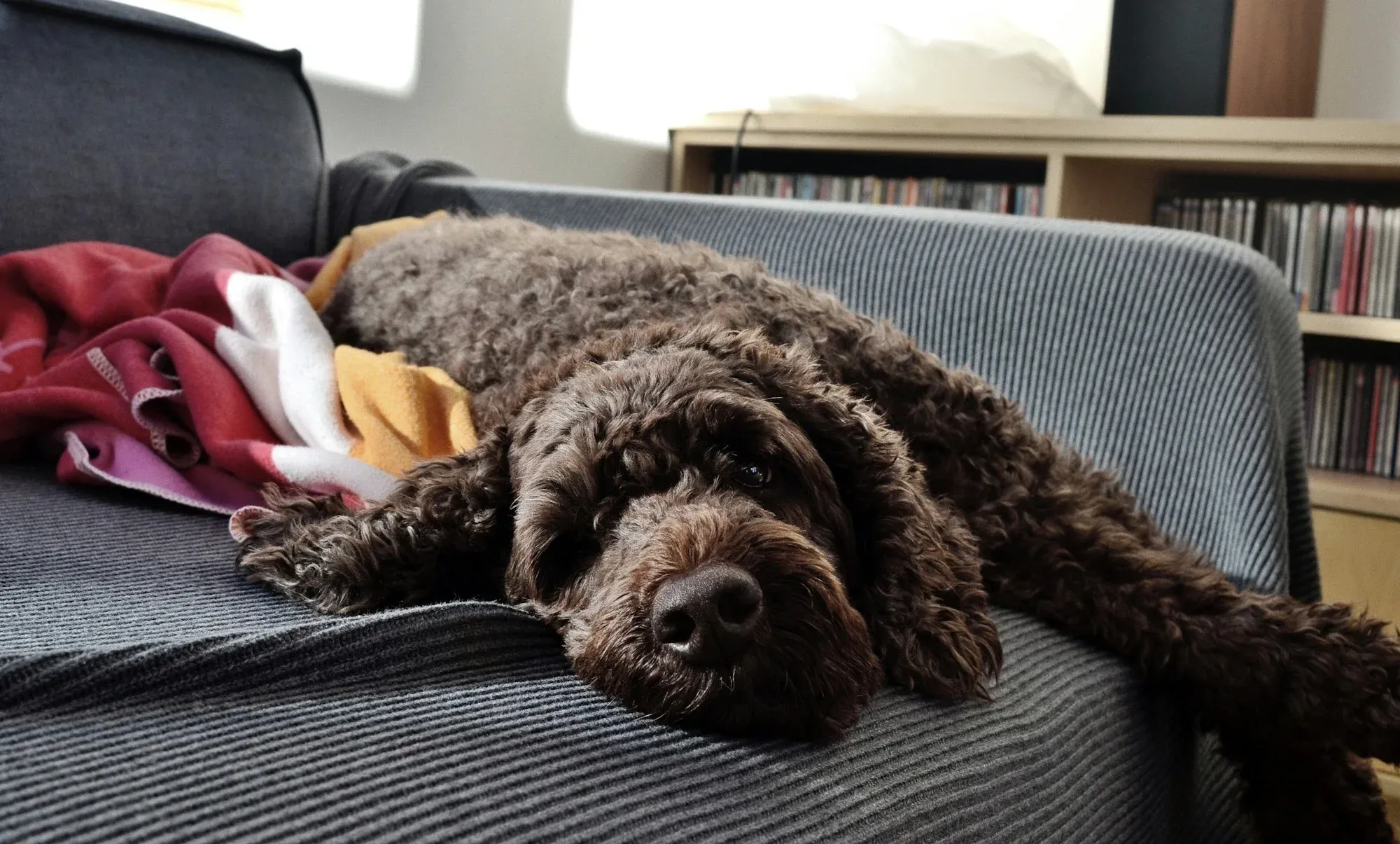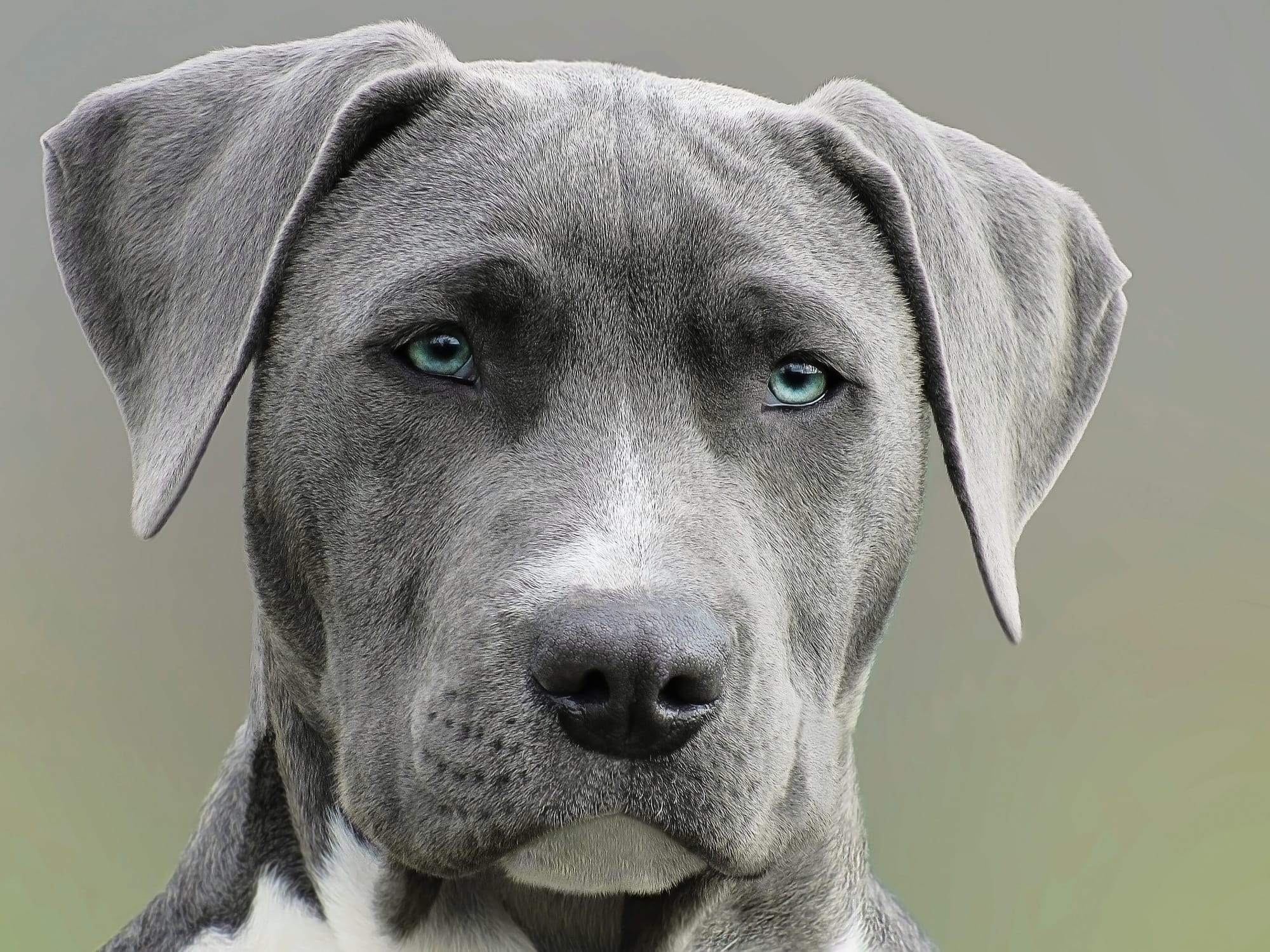Discover the intriguing diversity of the dachshund dog breed, a collection of pups that blend a remarkable range of features and traits. Historically known as the 'badger dog,' dachshunds were bred to scent, chase, and flush out badgers and other burrow-dwelling animals. Despite their common shared breed standard established by the American Kennel Club (AKC).
Dachshunds offer a fascinating variation based on their coat, color, and size. From the charming dapple dachshund to the compact kitchen or ‘dwarf’ variant, each type contributes to the rich tapestry of this breed registry. The Dachshund Club of America plays a significant role in defining these breed standards, including the acceptance of various coat patterns.
The three coat types, smooth-haired, longhaired, and wire-haired, provide a unique aesthetic. At the same time, their weights range from below 16 pounds to 32 pounds, differing significantly from the common misconception that all dogs fall within the 16 and 32 pounds range.
Equipped with a history as hunting dogs and with a diversity that includes dachshund mixes, the study of these ‘wiener dogs’ unveils a world of variety and depth, making the exploration of the different breeds of dachshunds a compelling journey for all dog enthusiasts.
By examining these distinct types individually, readers will learn about the breed’s wide range and develop a heightened awareness of the factors contributing to their diverse nature.
Ultimately, this article seeks to ignite an innate desire for mastery within its audience by encouraging them to delve deeper into the world of Dachshunds and appreciate its unique intricacies.

Overview of Dachshund Classification
Below I’ll describe the different types of dachshunds dogs based on their size and coat type. Dachshund puppies can vary significantly in their characteristics depending on their size and coat type. In terms of size, there are three basic classifications: standard, miniature, and rabbit dachshunds. The standard dachshund is the largest, the miniature is smaller and the rabbit dachshund is the smallest.
Dachshunds can also be classified based on their coat type into short-haired (smooth), long-haired, and wire-haired. Each coat type has its unique characteristics and requires specific grooming needs.
1. Basic classification
The classification of dachshunds based on size includes the Standard Dachshund, Miniature Dachshund, and Rabbit Dachshund, evoking a distinct sense of diversity and intrigue. For example, two dachshund puppies could include a standard dachshund and a miniature dachshund, showcasing the size differences within the breed.
The standard dachshund is the largest among the three types, typically weighing between 16 to 32 pounds and standing around 8 to 9 inches. With their long bodies and short legs, they have an iconic appearance that captures attention.
On the other hand, miniature dachshunds are smaller, weighing 8 to 11 pounds and standing at a height of about 5 to 7 inches. Despite their compact stature, they possess the same charming characteristics as their larger counterparts.
In addition to these dachshunds into two well-known types, there is also the lesser-known rabbit color of dachshund. This type is smaller than the miniature dachshund and is often called a toy breed.
Weighing only around 4 to 8 pounds and standing at a mere height of approximately 4 to 6 inches, rabbit dachshunds embody cuteness in its tiniest form. Their petite size makes them highly adaptable for living in small spaces or being carried around by their owners.
The classification based on size showcases the diverse range that exists within this beloved breed. Each type offers its unique charm, from the majestic standard dachshunds to the adorable miniature ones and even the pint-sized rabbit variety.
Whether one prefers a larger companion or seeks a compact canine friend, these different classifications cater to various preferences while retaining alluring qualities intrinsic to this breed’s character.
2. Basic classification: Coat types
Coat type is another fundamental classification that distinguishes dachshunds, with the options of short-haired (smooth), long-haired, and wire-haired varieties shaping their visual appeal.
The short-haired dachshund is characterized by its smooth, shiny coat that lies close to the body. This coat type requires minimal grooming and is often admired for its sleek appearance.
On the other hand, the long-haired dachshund boasts a flowing coat that is soft to the touch. Their luscious locks require regular brushing to prevent matting and tangling, but they add an elegant charm to this breed. Longhaired dachshunds come in various colors and patterns, and their coat can exhibit genetic traits that influence its texture and appearance.
Lastly, the wire-haired dachshund has a unique coat texture with a dense undercoat covered by a wiry outer layer. This combination provides them with extra protection against harsh weather conditions and rough terrains.
Each coat type offers its own set of advantages and considerations for potential owners. The short-haired variety may be most suitable for those who prefer low-maintenance grooming as it requires minimal attention.
However, individuals who enjoy pampering their pets may find joy in maintaining the luxurious coats of long-haired dachshunds. The wire-haired dachshund falls somewhere in between these two extremes, providing both protection and moderate grooming requirements.
Understanding these different coat types allows prospective owners to make informed decisions based on their preferences and lifestyle. Whether one gravitates towards the sleekness of a short-haired dachshund or desires the elegance of a long-haired companion, each variation adds depth to this beloved breed’s diversity while ensuring there is something for every dog lover’s taste within this basic classification framework.
Short-haired dachshunds offer a low-maintenance option, with their smooth coats requiring minimal grooming and shedding less than their long-haired counterparts. On the other hand, long-haired dachshunds enchant with their flowing locks, making them a perfect choice for those who appreciate the beauty of a well-groomed and luxurious coat.
Detailed Examination of Each Type of Dachshund
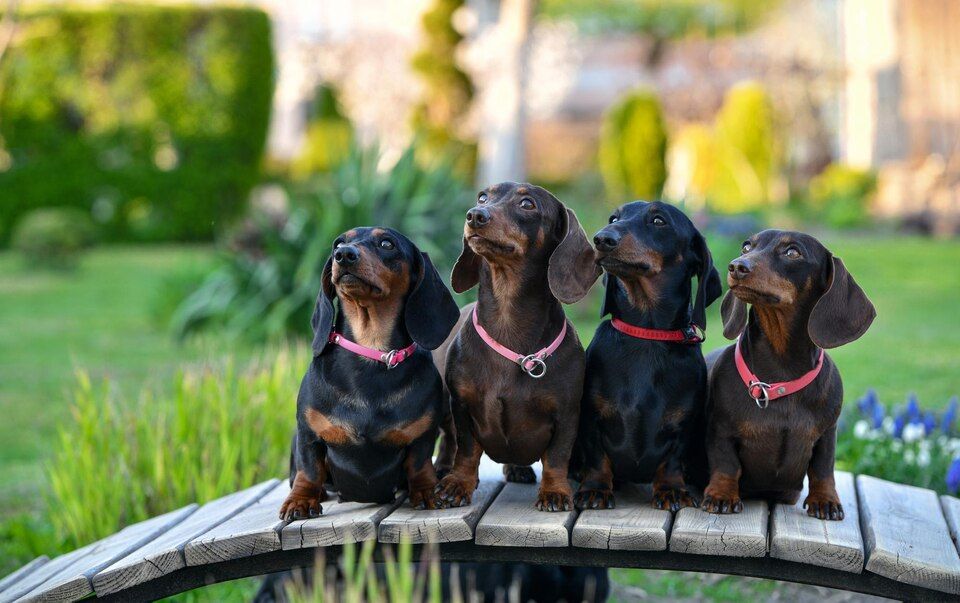
Double dapple dachshunds are a unique pattern within the breed, characterized by a mix of white and dappled patches on their coat. While they may have a striking appearance, double dapple dachshunds are prone to several health issues, including vision and hearing problems. These health challenges arise due to the genetic makeup required to produce the double dapple pattern. Therefore, it is crucial to practice responsible breeding and conduct genetic testing to avoid these potential issues. Breeders and owners should be cautious and prioritize the health and well-being of the dogs over aesthetic preferences.
1. Standard Dachshund
Standard Dachshunds display distinct physical characteristics, possess unique temperaments and behaviors, and require specific health care due to potential issues. In terms of physical appearance, Standard Dachshunds are known for their long bodies and short legs.
They typically have a deep chest, muscular build, and a prominent breastbone. Their head is elongated with a slightly arched skull and a well-defined stop. The eyes are medium-sized and oval-shaped and express an intelligent and alert demeanor. Additionally, the ears of Standard Dachshunds are set high on the head and moderately wide.
Regarding temperament and behavior, Standard Dachshunds are known for being courageous, clever, and independent dogs. They possess a strong prey drive, making them prone to chasing small animals or objects that catch their attention.
Despite their small size, they often exhibit fearless behavior due to their hunting background. However, it is important to note that they may also exhibit stubbornness due to their strong-willed nature. Proper training from an early age is essential to ensure they develop into well-mannered companions.
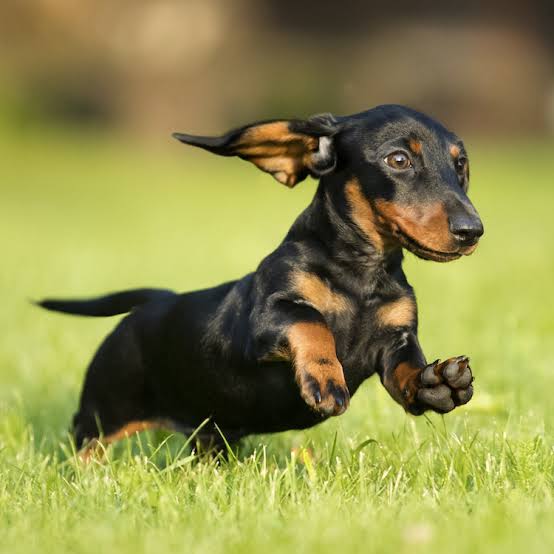
Regarding health issues and care, Standard Dachshunds have specific needs that owners should be aware of. Due to their long bodies and short legs, they are susceptible to back problems such as intervertebral disc disease (IVDD).
This condition occurs when the discs between the vertebrae rupture or herniate, leading to pain or paralysis in severe cases. Regular exercise on soft surfaces like grass instead of hard pavement can help minimize the risk of injury. Maintaining a healthy weight through proper diet is crucial as excess weight strains their backs.
Overall, understanding the distinct physical characteristics of Standard Dachshunds allows owners to appreciate their unique appearance while being aware of potential health issues associated with their body shape.
Furthermore, recognizing their independent yet intelligent temperament helps guide training methods to ensure a harmonious relationship between owner and dog. By providing the proper care, including regular exercise and weight management, Standard Dachshunds can lead happy and healthy lives as beloved companions.
2. Miniature Dachshund
The Miniature Dachshund, known for its diminutive size and endearing charm, displays distinct physical characteristics, possesses unique temperaments and behaviors, and requires specific health care due to potential issues.
Despite being smaller than the Standard Dachshund, the Miniature Dachshund retains this breed's iconic elongated body with short legs. Despite their small size, they have a well-proportioned frame and muscular build that allows them to be agile and active. Their coat can come in common colors and patterns, including smooth, longhaired, or wirehaired varieties.
Regarding temperament and behavior, Miniature Dachshunds are often described as lively, affectionate companions. They are known for their playful nature and love to engage in interactive games with their owners.
However, they can also show a stubborn streak, which may require consistent training and firm guidance. Due to their strong hunting instincts inherited from their ancestors bred for hunting small game like badgers, it is important to provide them with mental stimulation through activities such as puzzle toys or scent work.
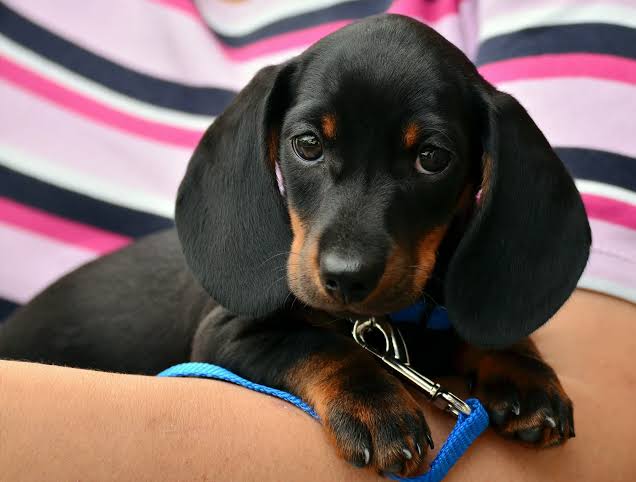
Regarding health issues and care, Miniature Dachshunds are prone to certain conditions related to their body structure. Their long spine puts them at risk for intervertebral disc disease (IVDD), which can cause back problems or paralysis if not managed properly. Owners must be cautious about activities that may strain the dog's back or lead to injury.
Regular exercise should be encouraged but not involve jumping from heights or excessive stair climbing. Maintaining a healthy weight is crucial in preventing further stress on their backs. Regular veterinary check-ups should include an examination of the spine and any signs of discomfort or pain should be addressed promptly.
By understanding these unique aspects of miniature dachshunds' physical characteristics, temperament and behavior traits, and specific healthcare needs, owners can provide the best possible care and ensure a happy and fulfilling life for their beloved companions.
3. Rabbit Dachshund
The Rabbit Dachshund requires specific health care to ensure a happy and fulfilling life with its unique physical characteristics and distinct temperament and behavior traits. This type of dachshund is named after it resembles a rabbit, particularly in its elongated body shape and short legs.
The Rabbit Dachshund typically has a slender frame with a longer torso than others. Their legs are shorter and more delicate, making them agile and quick on their feet. Additionally, they have expressive eyes that convey intelligence and curiosity.
Regarding temperament and behavior, the Rabbit Dachshund tends to be energetic, playful, and sociable. They enjoy being around people and other animals, making them excellent companions for families or individuals who seek an active lifestyle.
However, it is important to note that they may sometimes exhibit some stubbornness due to their independent nature. Training these dachshunds requires patience, consistency, and positive reinforcement techniques.
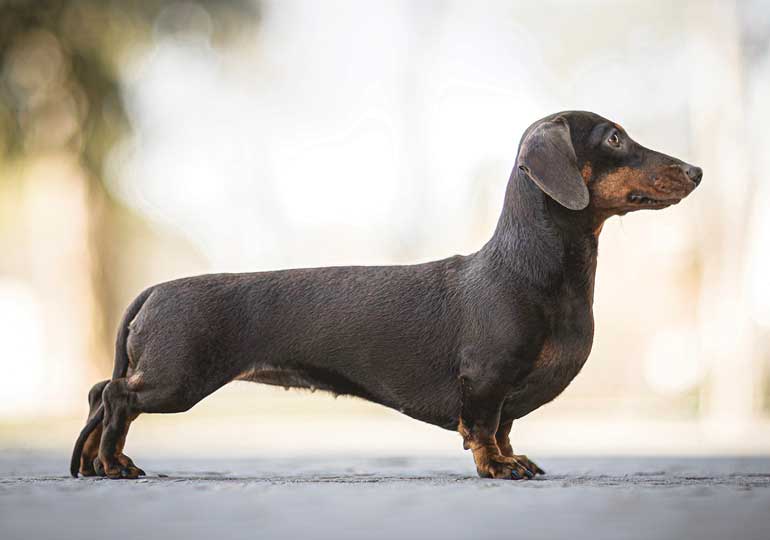
When it comes to health issues and care for the Rabbit Dachshund breed, there are certain considerations that owners should keep in mind. Due to their elongated bodies and short legs, these dogs are prone to spinal problems such as intervertebral disc disease (IVDD).
Owners must provide proper support when handling or carrying the dog to minimize the risk of injury. Regular exercise is also essential for maintaining their overall health but should be done cautiously to prevent strain on their backs.
Furthermore, dental care is crucial for the Rabbit Dachshund as they can be prone to dental diseases such as periodontal disease if oral hygiene is neglected. Veterinarians recommend regular brushing of teeth and professional dental cleanings. Lastly, like all dachshunds breeds, obesity can be an issue if their diet isn't properly monitored or portioned accordingly.
4. Smooth Dachshund
Smooth Dachshunds, known for their sleek appearance and lively temperament, require specific health care to ensure their well-being. As the name suggests, smooth-haired dachshunds have a short and smooth based on coat that is dense and shiny.
Their physical characteristics include a long body with muscular legs, making them agile and swift. These dachshunds come in various colors such as red, black and tan, chocolate and tan, or even blue and tan. With their confident stance and expressive eyes, smooth dachshunds exude charm.
In terms of temperament and behavior, smooth dachshunds are known to be active and courageous dogs. They possess a strong hunting instinct which can make them prone to chasing small animals or objects if not properly trained.
Despite their small size, they are often described as fearless and determined to pursue their prey. Additionally, these dachshunds tend to form deep bonds with their owners but may sometimes exhibit some stubbornness. Early socialization is crucial to ensure that they grow into well-rounded dogs who get along with other pets and children.
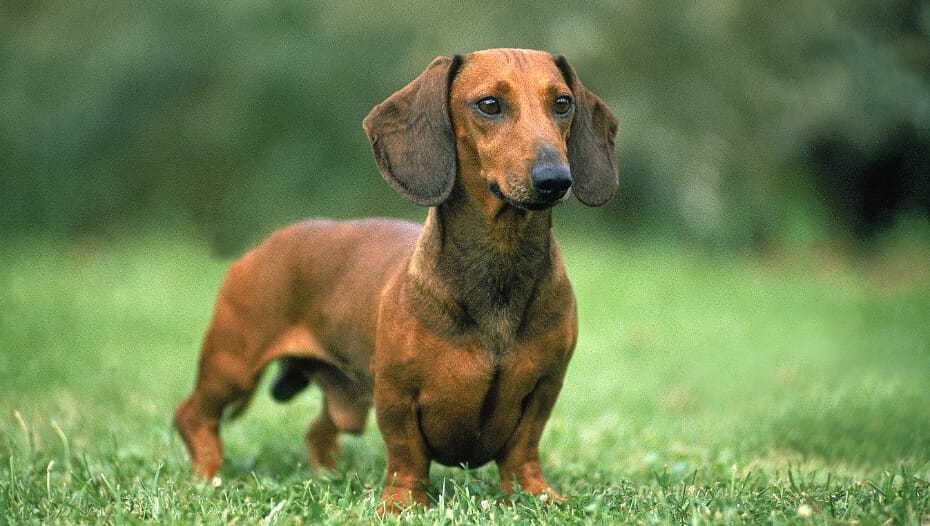
Regarding health issues and care, smooth dachshunds are generally considered healthy dogs. However, they are prone to certain conditions such as intervertebral disc disease due to dachshunds have long spines.
Owners must exercise regularly while avoiding activities that strain the dog's back excessively. Maintaining a healthy weight through a balanced diet is also essential in preventing joint problems commonly seen in this breed. Regular vet check-ups should be scheduled to monitor potential health issues early on.
Smooth dachshunds possess physical characteristics that make them visually appealing with their sleek coats and distinctive body shape. Their lively temperament requires proper training for obedience while ensuring they receive enough mental stimulation through playtime or interactive toys. Appropriate healthcare measures will help keep these dogs happy and thriving for years.
5. Long-Haired Dachshund
Moving on from our discussion of the Smooth Dachshund, let us now delve into the fascinating world of Long-Haired different Dachshunds. These elegant canines possess a distinct charm that sets them apart from their smooth-haired counterparts. They are known for their luxurious coats, which cascade down their bodies in beautiful waves. This long hair adds to its aesthetic appeal and protects against harsh weather conditions.
Regarding physical characteristics, Long-Haired Dachshunds have a body structure similar to others. They have long bodies and short legs, allowing them to navigate underground tunnels easily. However, what truly distinguishes them is their soft and silky coat that can vary in size, color, and pattern. From shades of red and cream to black and tan combinations, there is a wide range of possibilities regarding the appearance of these delightful dogs.
Regarding temperament and behavior, Long-Haired Dachshunds possess many traits that make them lovable companions. They are often described as affectionate and friendly beings who enjoy spending time with their families. Despite their small size, they exude confidence and can be quite fearless in certain situations. Additionally, they tend to be intelligent dogs eager to please their owners.
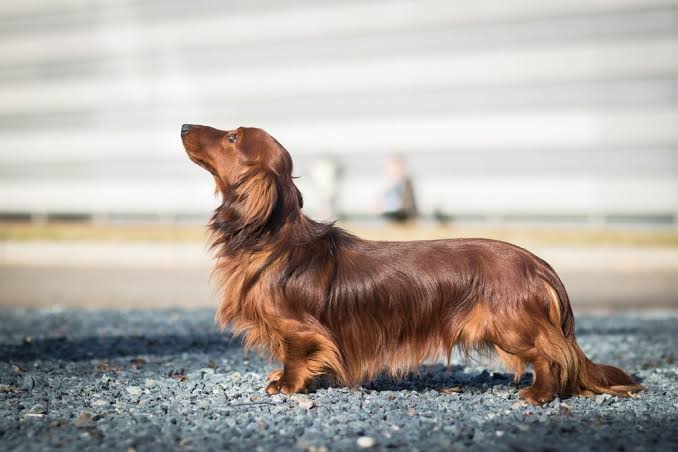
While they may appear delicate due to their long hair on their bellies, Long-Haired Dachshunds require regular grooming to keep their coats healthy and tangle-free. Brushing should be done at least once a week to prevent the matting or tangling of the fur. Furthermore, special attention should be given during shedding seasons when they may experience heavier hair loss than usual.
Long-Haired Dachshunds offer a unique blend of elegance and playfulness. Their physical characteristics make them stand out among other dachshund types while maintaining the distinctive traits that define this beloved breed. With proper care and attention, these long-haired wonders can bring joy and companionship to any household lucky enough to have them.
6. Wire-Haired Dachshund
Characterized by their wiry and rough coats resembling a thorny hedgehog, the Wire-Haired Dachshunds exhibit physical features that set them apart. The wirehaired dachshund has a distinctive coat texture that is harsh and dense, protecting them against rough terrains and cold weather conditions.
Their coarse outer coat covers a dense undercoat that helps to insulate their bodies. This unique coat requires regular brushing to prevent matting and tangling and hand-stripping or professional grooming every few months to maintain its texture.
Additionally, wire-haired dachshunds have prominent beards and eyebrows, adding to their charming appearance. In terms of temperament and behavior, wire-haired dachshunds are known for their lively and spirited nature. They possess an independent streak, making them confident and self-assured dogs.
Despite their small size, they have a strong prey drive due to their hunting background, so keeping them on a leash or in a secure area when outside is important. These dogs are generally friendly towards humans and other pets but may sometimes exhibit some stubbornness. Early socialization and consistent training are crucial for channeling their energy positively.
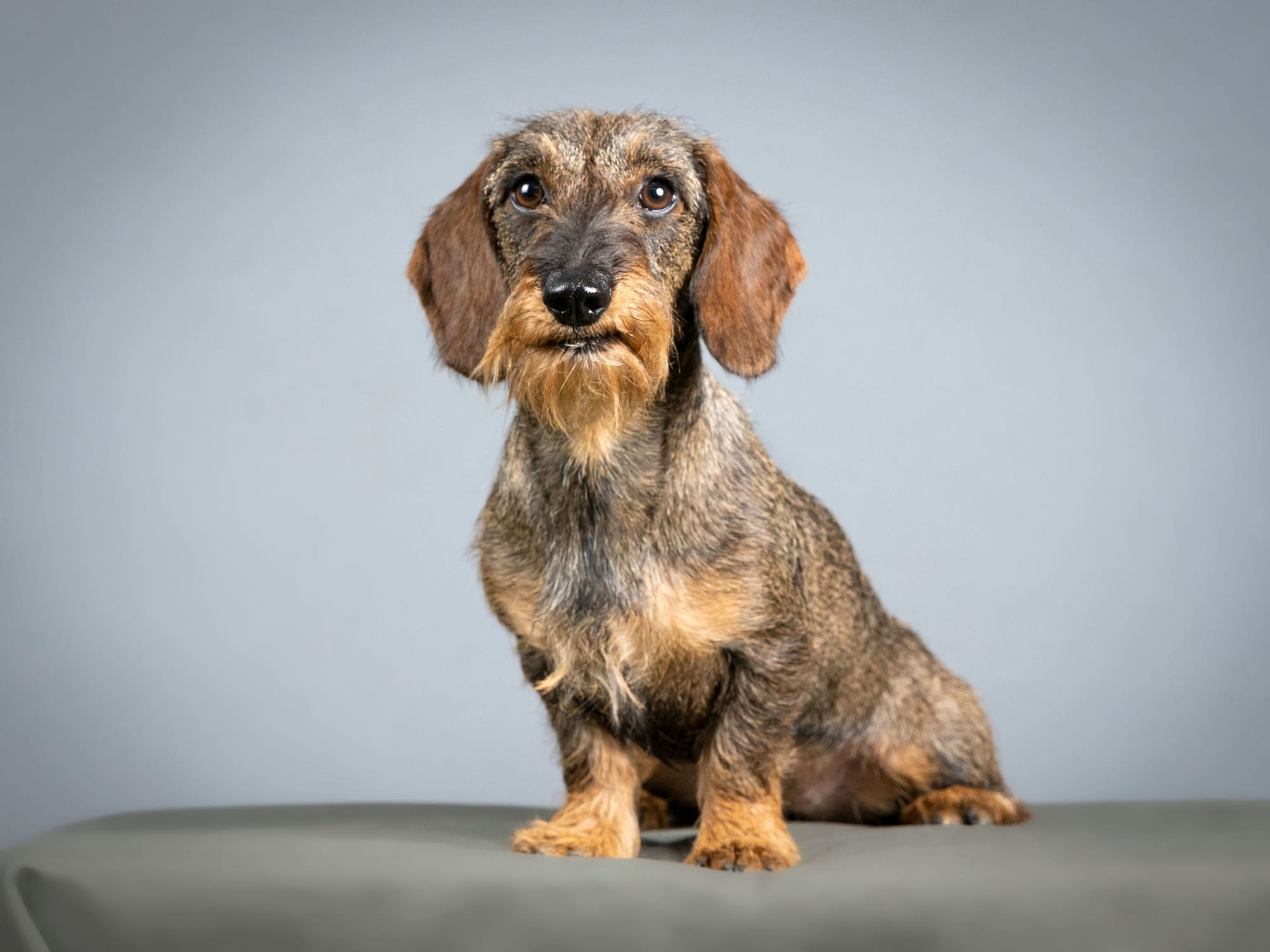
Regarding health issues and care, wirehaired dachshunds can be prone to conditions like intervertebral disc disease (IVDD), which affects the spine due to their long bodies. Regular exercise is important for maintaining muscle tone and preventing obesity, which can put additional strain on the back.
Providing them with proper nutrition is essential for overall well-being as well. Routine veterinary check-ups should include examinations of the ears since wire-haired dachshunds can be susceptible to ear infections due to hair growth within the ear canal.
Overall, the wire-haired dachshund stands out with its distinct physical characteristics including its wiry coat texture and unique facial features. Their lively temperament and spirited nature make them a joy to be around, although they may require consistent training due to their independent streak.
Owners can ensure that these delightful dogs lead happy and healthy lives by understanding their specific health needs, such as managing the risk of intervertebral disc disease and maintaining proper ear hygiene.
How to Choose the Right Dachshund for Your Home?
When choosing the right dachshund for your home, it is crucial to deeply understand the need and responsibilities of owning this breed, often affectionately called a wiener dog, and assess their suitability based on your lifestyle and living conditions while prioritizing health clearances and responsible breeding practices.
Dachshunds are unique dogs that require special consideration due to their distinctive physical characteristics and temperament. They have long bodies, short legs, and a strong prey drive, making them prone to back problems if not properly cared for. Additionally, their energetic nature requires regular exercise and mental stimulation to prevent boredom and destructive behavior.
Assessing suitability based on lifestyle and living conditions is essential when adding a dachshund to your family. These dogs thrive in homes where they receive ample attention and companionship from their owners. If you have a busy schedule or live in a small apartment without access to outdoor space, a dachshund may not be the best fit.
Their high energy levels require regular exercise such as walks or playtime in a secure yard. It’s important to consider whether you have the time and commitment necessary to meet these dogs’ need.
Furthermore, understanding the importance of health clearances and responsible breeding cannot be overstated when selecting a dachshund for your home. Reputable breeders prioritize the health of their dogs by conducting health screenings for genetic issues common in this breed, such as intervertebral disc disease (IVDD) or hip dysplasia.
You can significantly reduce the risk of inheriting potential health issues by obtaining a puppy from a breeder who conducts these tests on their breeding stock. Responsible breeders also provide proper socialization during the critical early stages of development to ensure well-rounded puppies ready for life with their new families.
Exploring the diversity of dachshunds requires careful consideration when choosing the right one for your home. Understanding the need and responsibilities of this breed, assessing suitability based on lifestyle and living conditions, and prioritizing health clearances and responsible breeding practices are crucial. Considering these factors, you can ensure a harmonious and fulfilling relationship with your dachshund companion.
Enhance Your Dachshund's Well-being with Fi: The Smart Choice for Your Furry Friend
Navigating the delightful diversity of Dachshunds is an exciting journey, made even better with the right tools. The Fi dog collar is an essential companion for your Dachshund's growth and safety. Designed for Dachshunds of all sizes - from the spirited Standard to the charming Miniature, and even the tiny Rabbit Dachshund - Fi offers advanced features like GPS tracking and activity monitoring.
What sets Fi apart is its innovative geofencing feature, providing an extra layer of security by alerting you if your pet strays beyond designated . This smart collar is more than just a device; it's a commitment to your Dachshund's health, safety, and happiness. Upgrade to Fi and ensure your Dachshund thrives under your care and attention.
Final Words
the diversity of the Dachshund breed is a tribute to the adaptability and charm of these unique little dogs. They are truly as versatile as endearing, from the traditional Standard Dachshund to the petite Rabbit or Kaninchen variant. Our journey through the many varieties of Dachshunds has illuminated the distinctness of the breed, in particular the three types Standard, Miniature, and Kaninchen each with their unique characteristics.
We explored their variations in size and coat types and colors, delving into the intricacies of base color, coat patterns, and even the rare Double Dapple Dachshund. This exploration has shown that while Dachshunds may appear uniform at first glance, a closer look reveals a broad spectrum of types, each contributing to the rich tapestry that makes this breed remarkable.
Whether you're charmed by the softer undercoat of the long-haired Dachshund, drawn to the bold boar color, or captivated by the small stature of the Miniature or Dwarf Dachshund, there's no denying that this breed, in all its variations, offers something special for every dog lover. Their remarkable diversity in size, coat, and color is a testament to these beloved Wiener dogs' rich lineage and adaptability.
